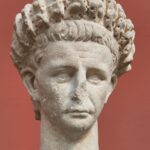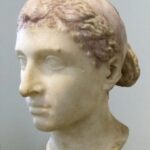In 2014, a group of scientists discovered an interesting find in one of the Egyptian temples. A bas-relief carved on a stone wall shows Emperor Claudius dressed like an Egyptian pharaoh in a heavily ornamented crown. In the sculpture, the emperor, reigning in the years 41-54 CE, raises a huge pole topped with a crescent moon. The painting also shows eight men, each wearing a cap with two bird feathers, climbing the support poles.
Egyptian hieroglyphs call Claudius “Son of Ra, Lord of Crowns” and refer to him as “King of Upper and Lower Egypt, Lord of the Two Lands”. The inscriptions also say that the emperor is erecting a pillar supporting the tent (or chapel) of the Egyptian fertility god Min. It can be concluded that this event is located during the summer. It is worth noting that Emperor Claudius never visited Egypt. After all, since Egypt joined Rome in 30 BCE, emperors have been portrayed as Egyptian pharaohs in all kinds of works. It was a confirmation of their supremacy, preserving the local culture.
God Min was deeply associated with the phallic cult, depicted in art as a man with an exposed penis, holding a flail in one hand and wearing a cap with two feathers on his head, often considered the incarnation of the god Amun as Amon-Min. In the bas-relief, the god Min addresses Claudius: “I am giving you a foreign, southern land”, which scientists associate with the desert areas around the Nile, where minerals may have been mined.







